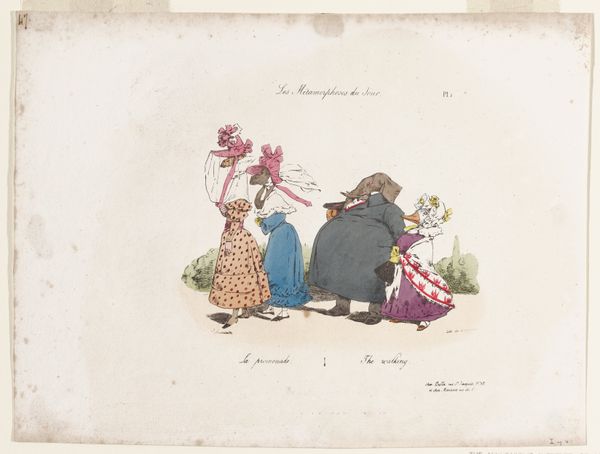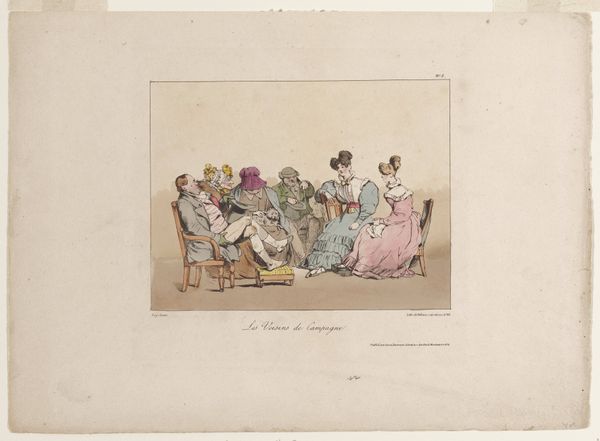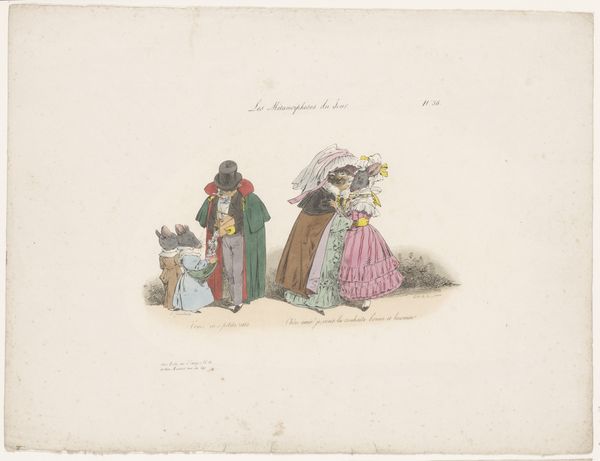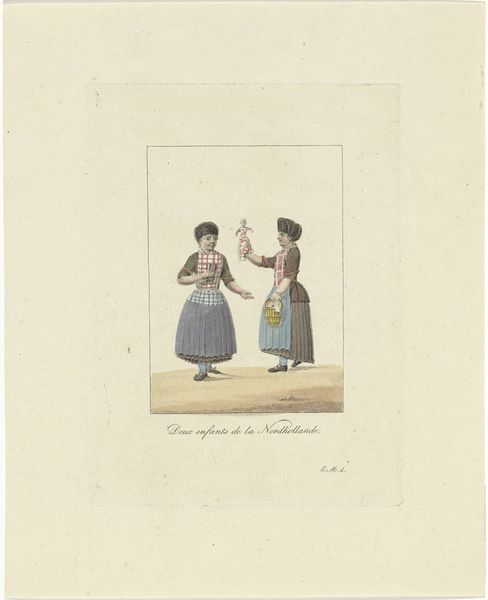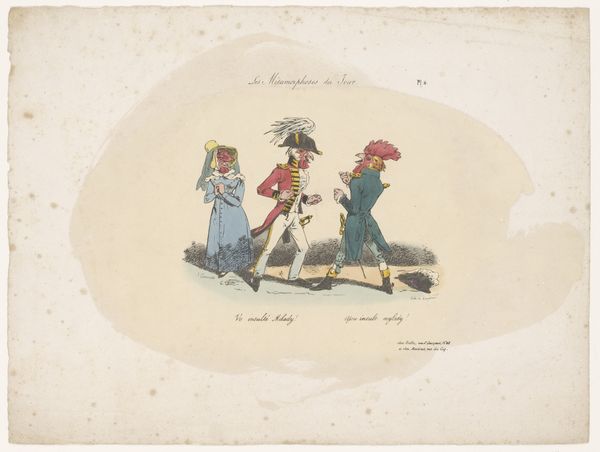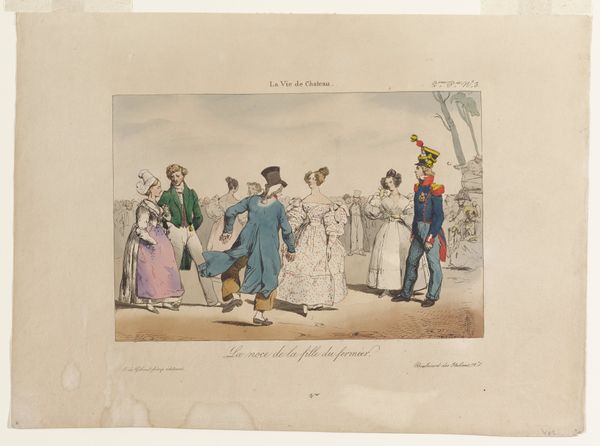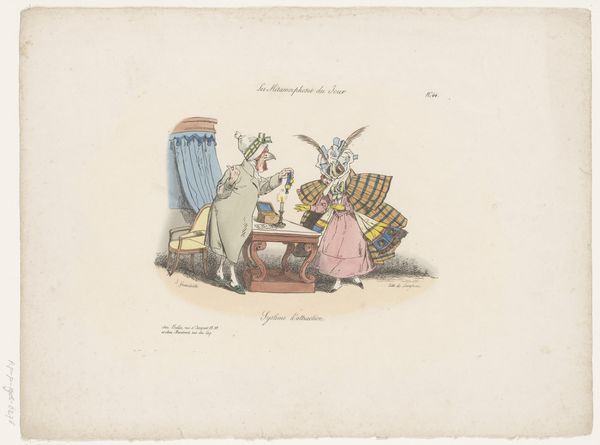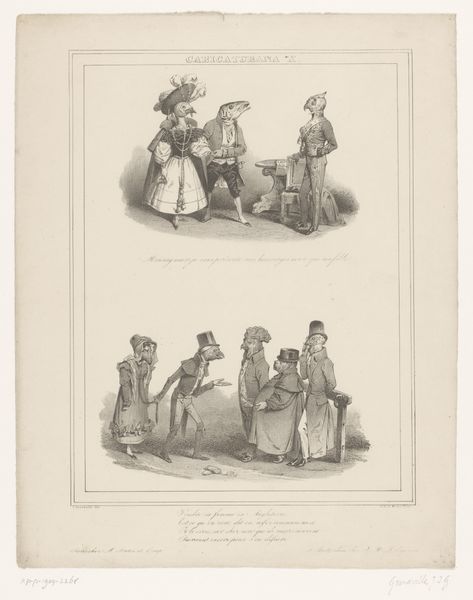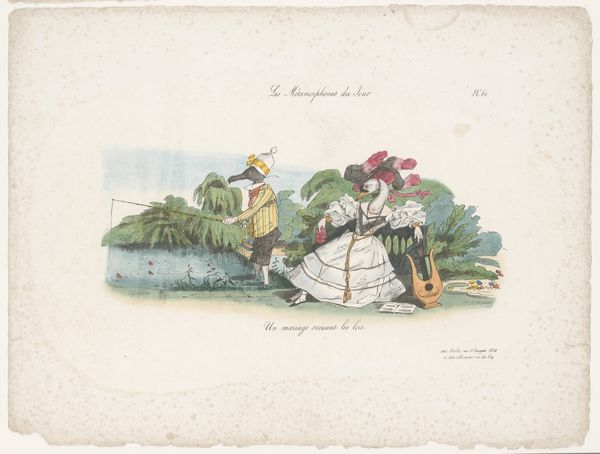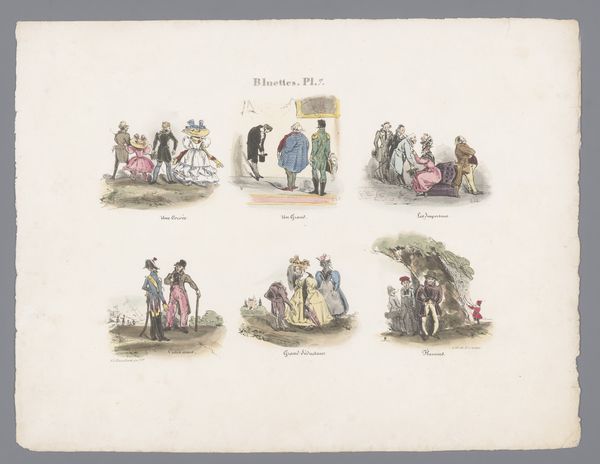
lithograph, print, paper, ink
#
lithograph
# print
#
caricature
#
paper
#
ink
#
romanticism
#
watercolour illustration
#
genre-painting
Dimensions: 6 1/2 x 7 1/2 in. (16.51 x 19.05 cm) (image)
Copyright: Public Domain
Editor: Here we have "Oh! c'est positif," a lithograph by Les Langlume, dating back to around 1829. The figures, with their animal heads and elaborate clothing, give off a very strange and unsettling feeling, almost like a distorted fairytale. How do you interpret this work? Curator: It's tempting to simply write it off as bizarre, but let’s consider the social commentary at play. The animalistic features combined with the aristocratic attire immediately raise questions about class and power. In what ways does Langlume seem to critique the elite of 1820s France through this grotesque imagery? Editor: So, you're thinking it’s not just a funny picture, but a commentary on social structures? Curator: Absolutely. Consider the Restoration period. There was a lot of societal upheaval, a return to tradition mixed with new social ideas. These prints became popular in papers like *Le Charivari,* which directly satirized political figures of the time. The hybrid of human and animal could reflect moral corruption or a specific, targeted critique of the bourgeois' behaviours. Is there any class indicator in particular that you notice? Editor: Well, they are very extravagant costumes, right? The quote in the foreground is not correct French, which might be poking fun at accents from other regions and maybe other languages as well, right? Curator: Precisely. These little details give the work much of its character. What do you think the function of these satirical images was, ultimately? Editor: Perhaps it was an act of rebellion, making fun of those in power and speaking truth to them, holding a mirror to their alleged faults, while trying to get others to see what's happening too. Curator: I agree. Art like this served as a powerful tool. Looking closely allows us to unpack societal norms and power dynamics in that period, which I would say, remain extremely relevant today. Editor: I see it differently now that we dug a bit deeper, so thank you! It seems like there's more to these comical pieces than initially meets the eye.
Comments
No comments
Be the first to comment and join the conversation on the ultimate creative platform.
